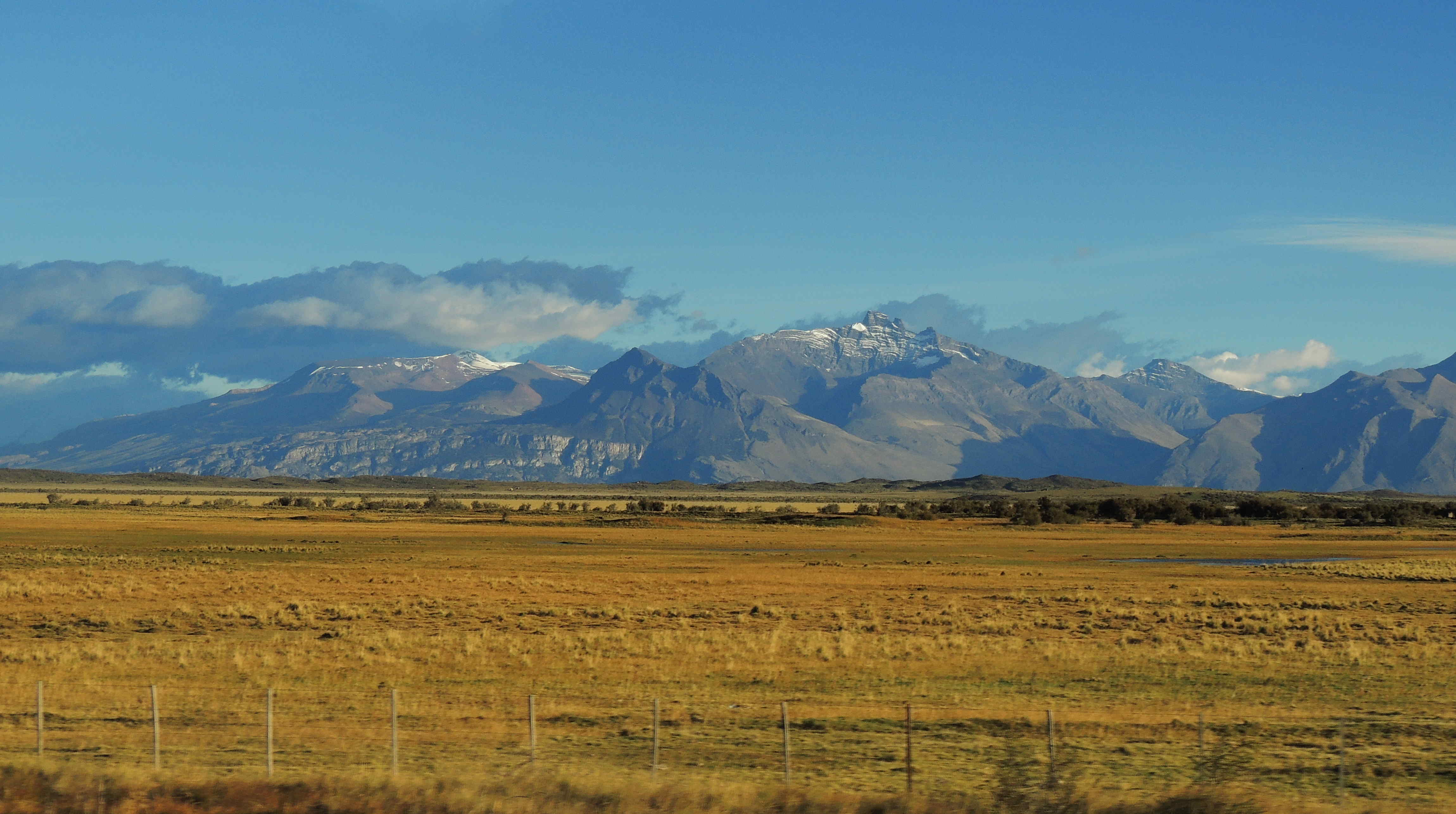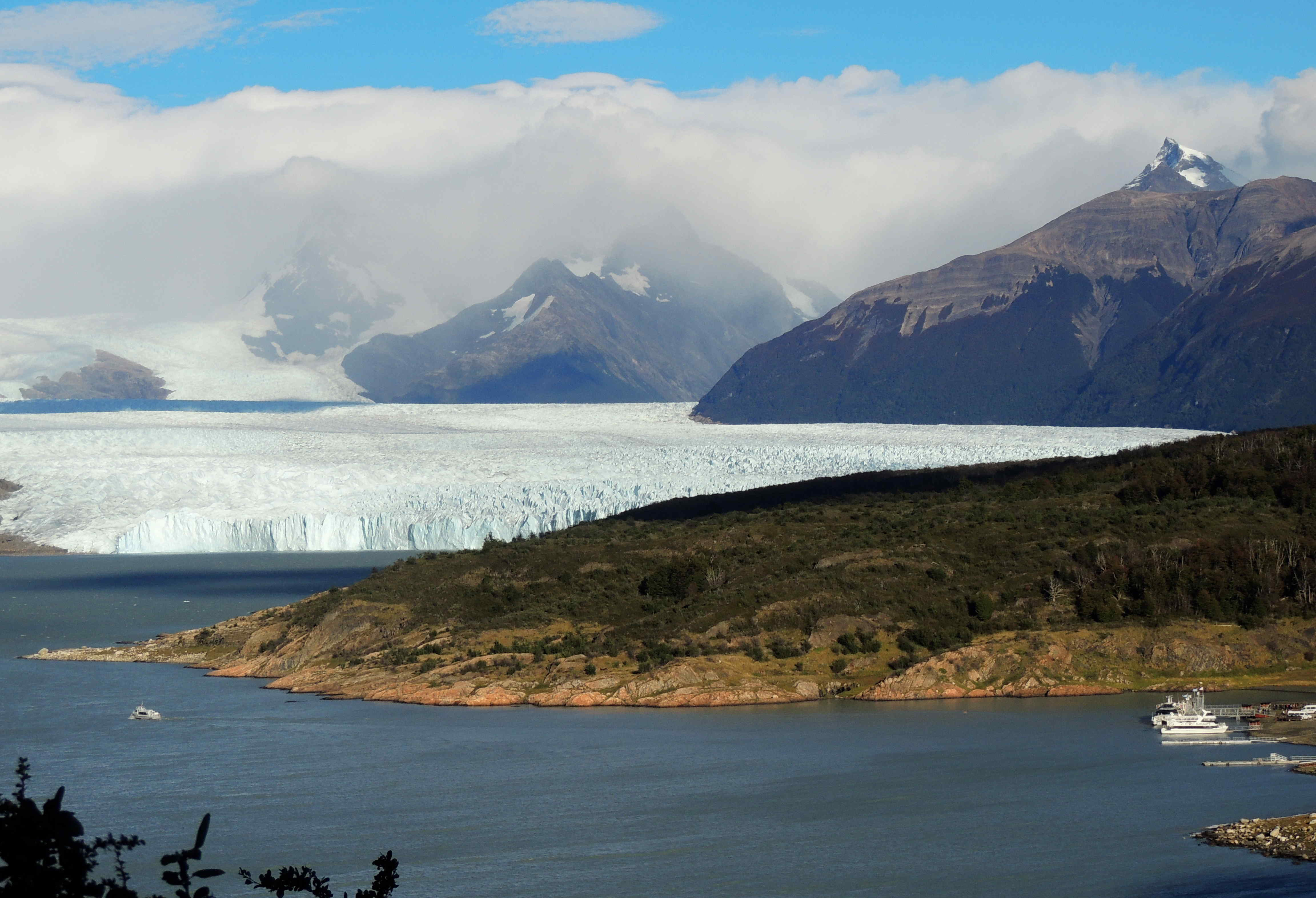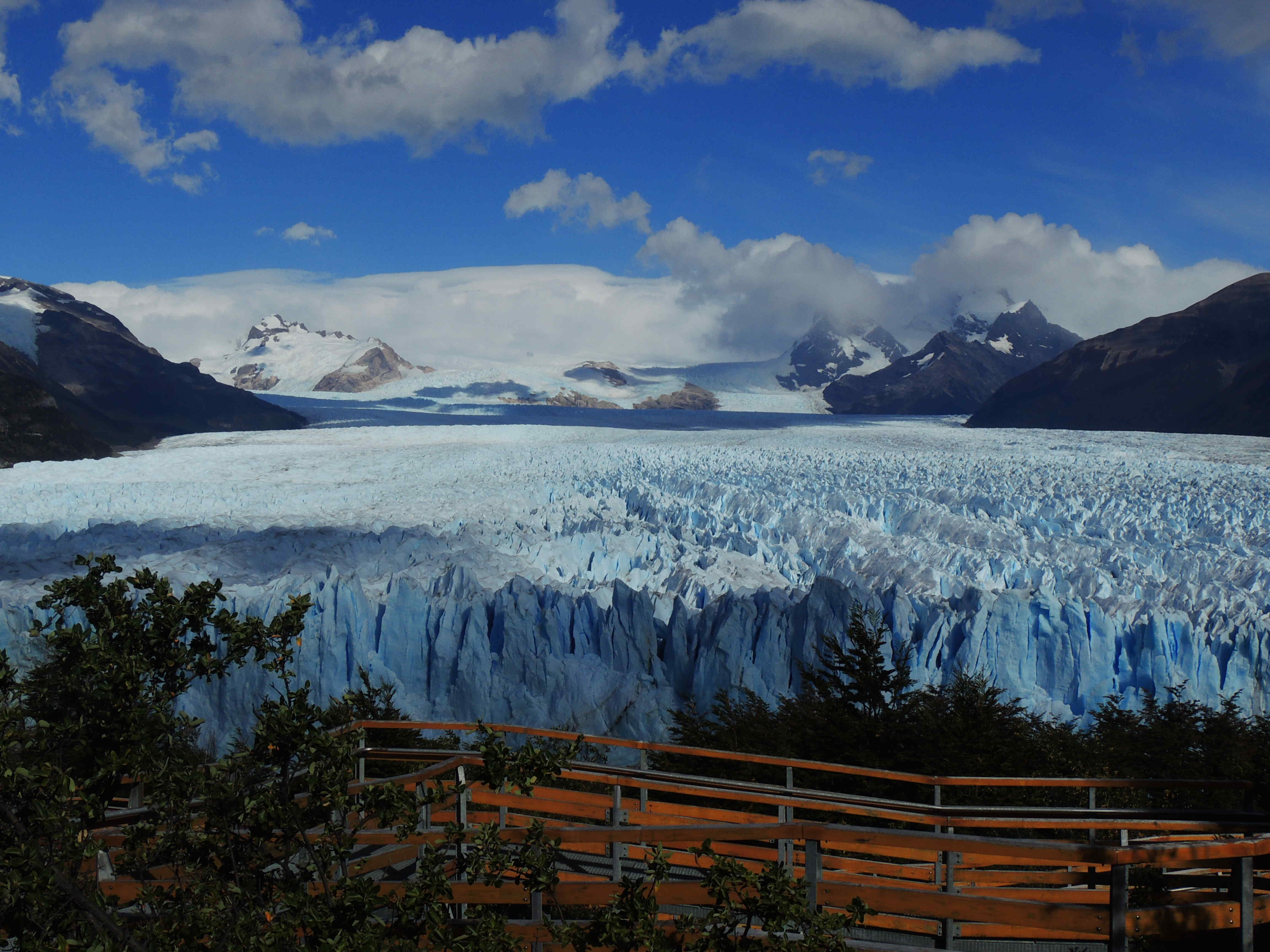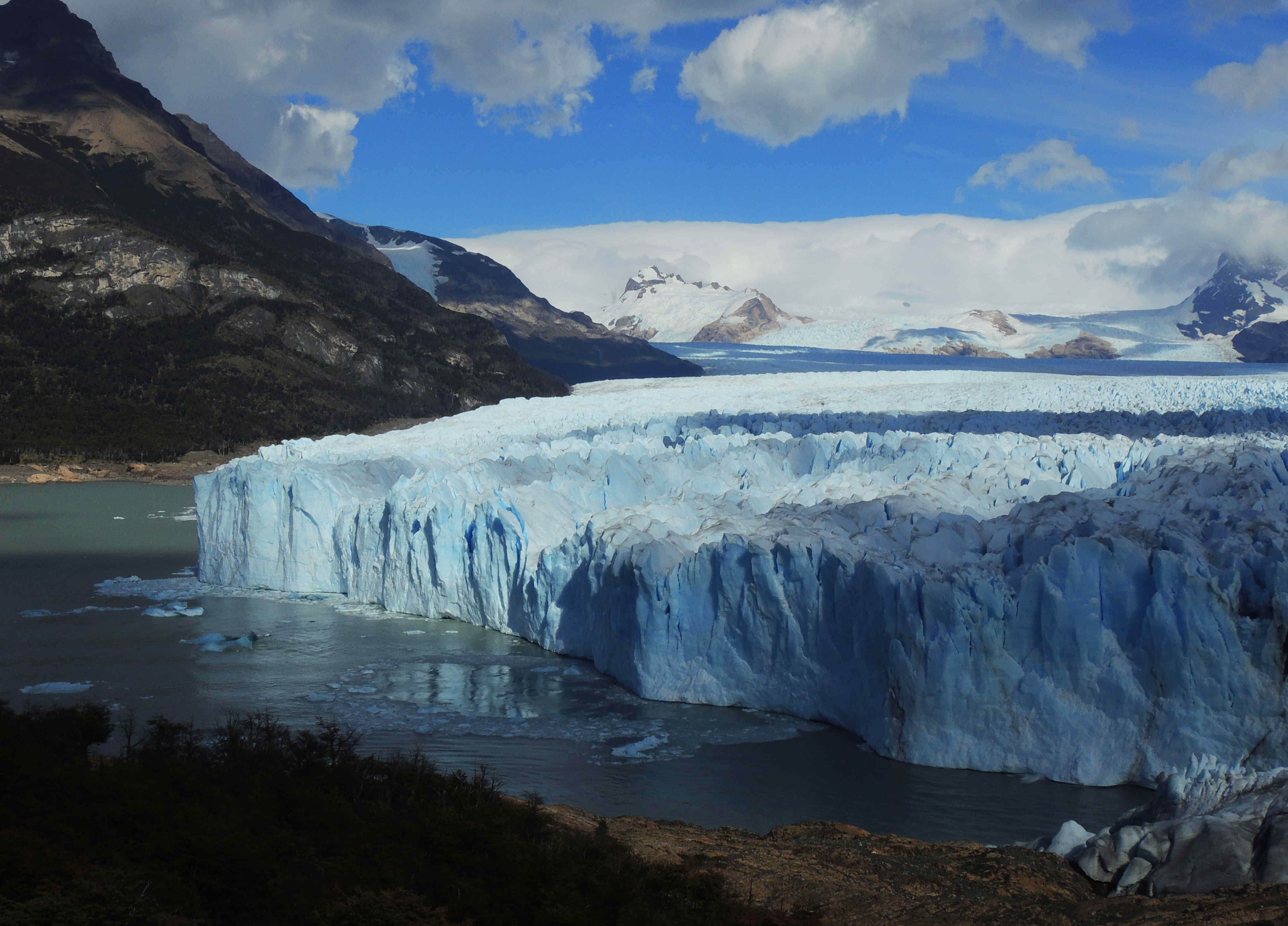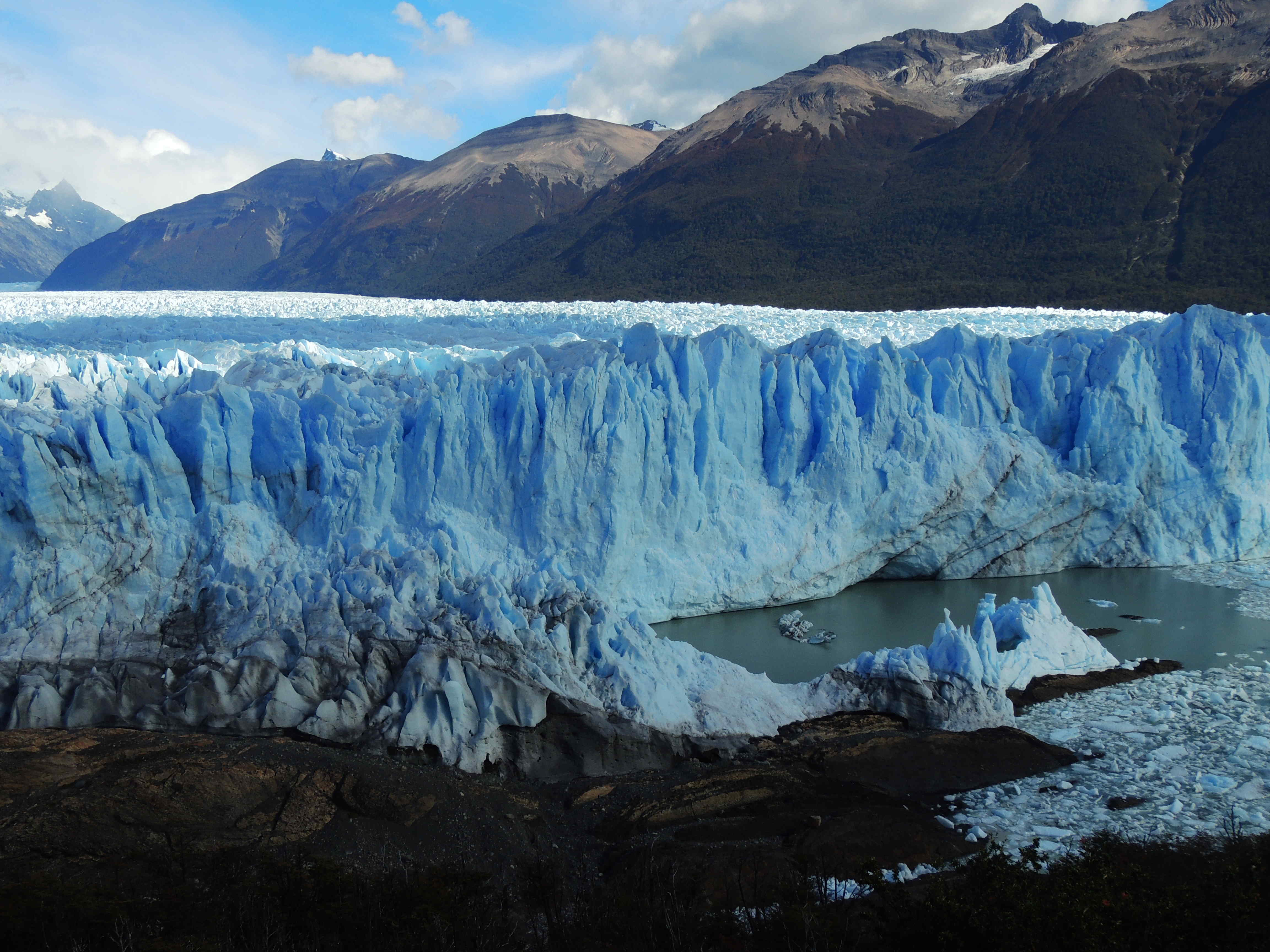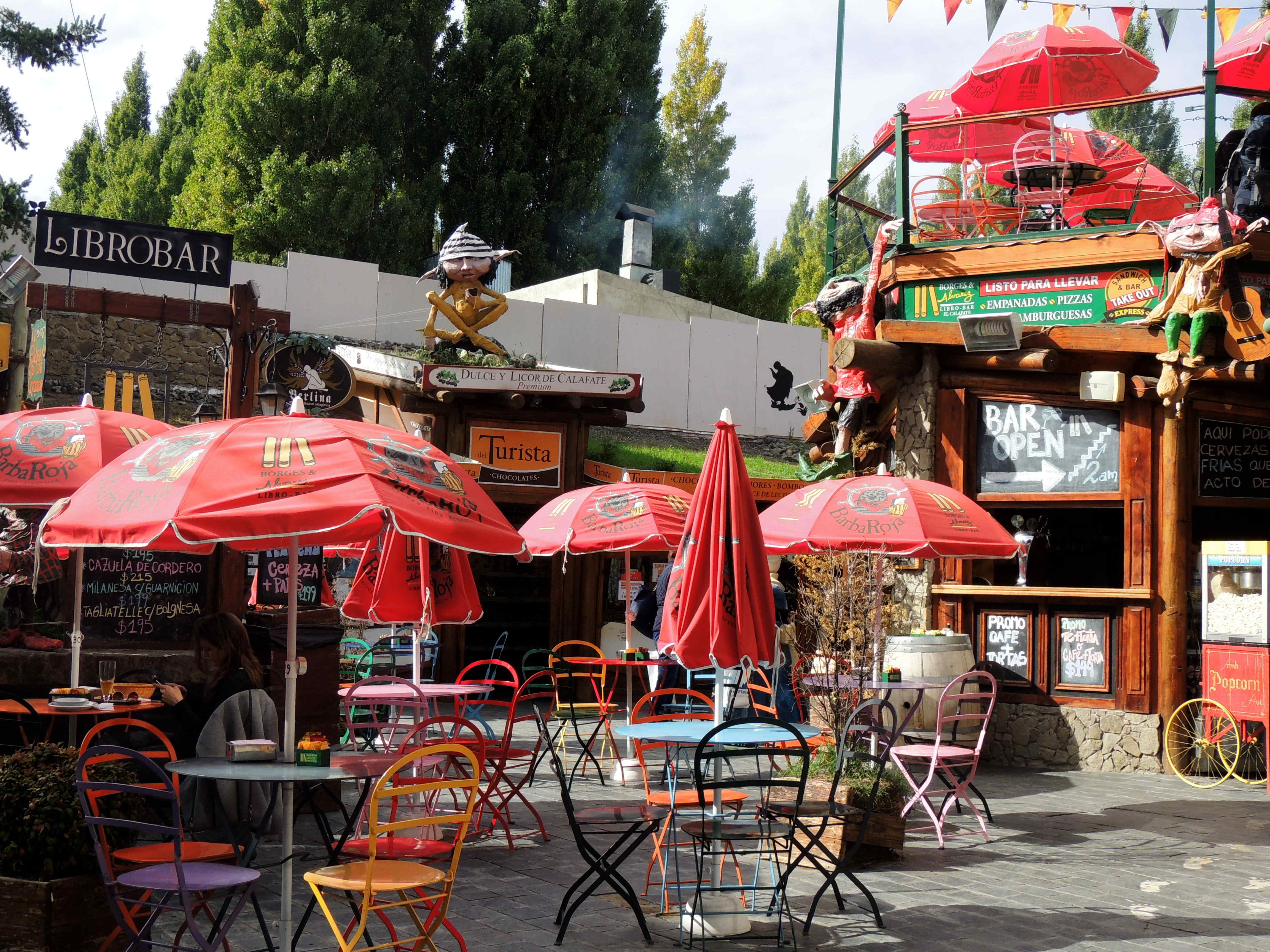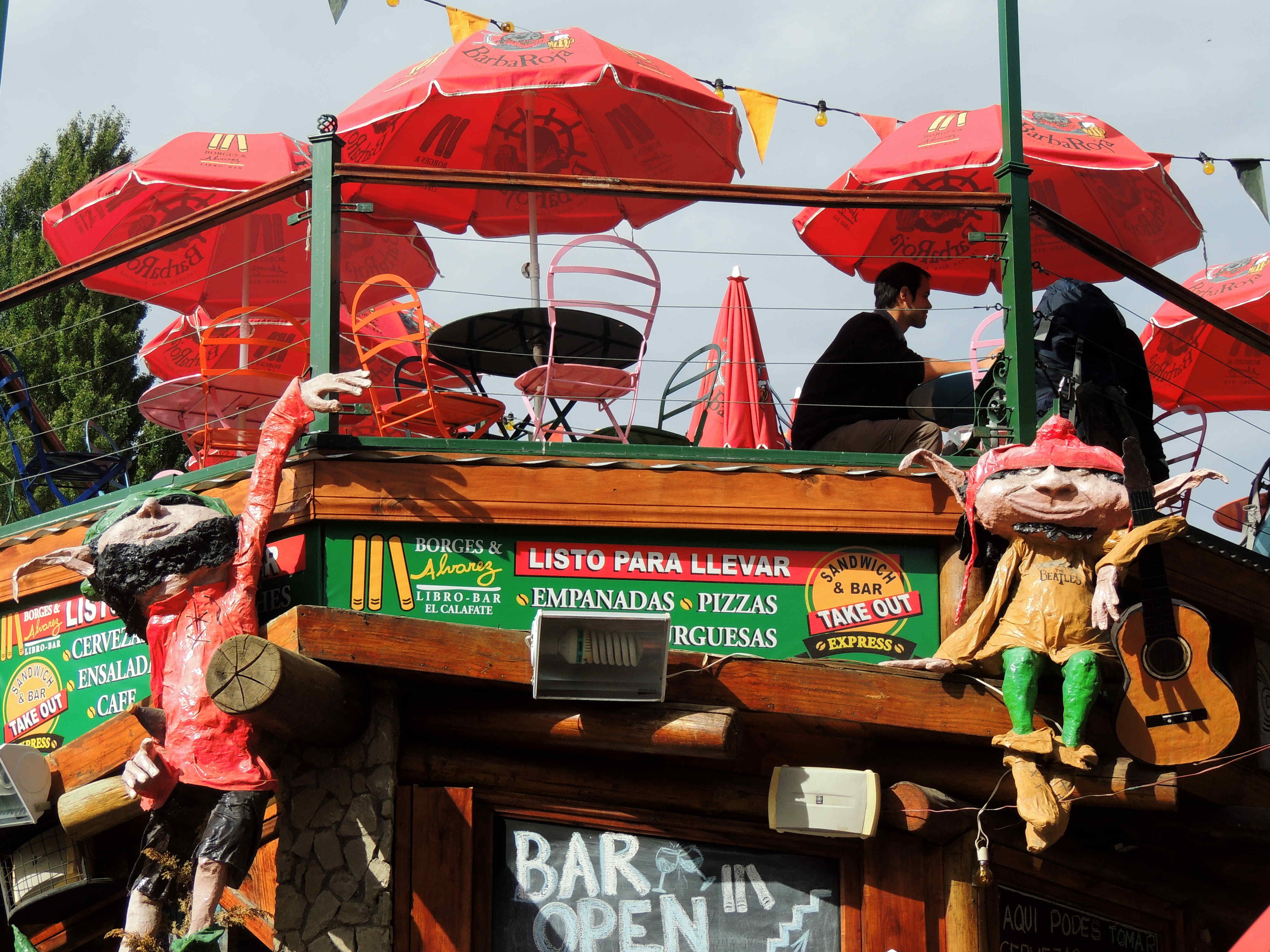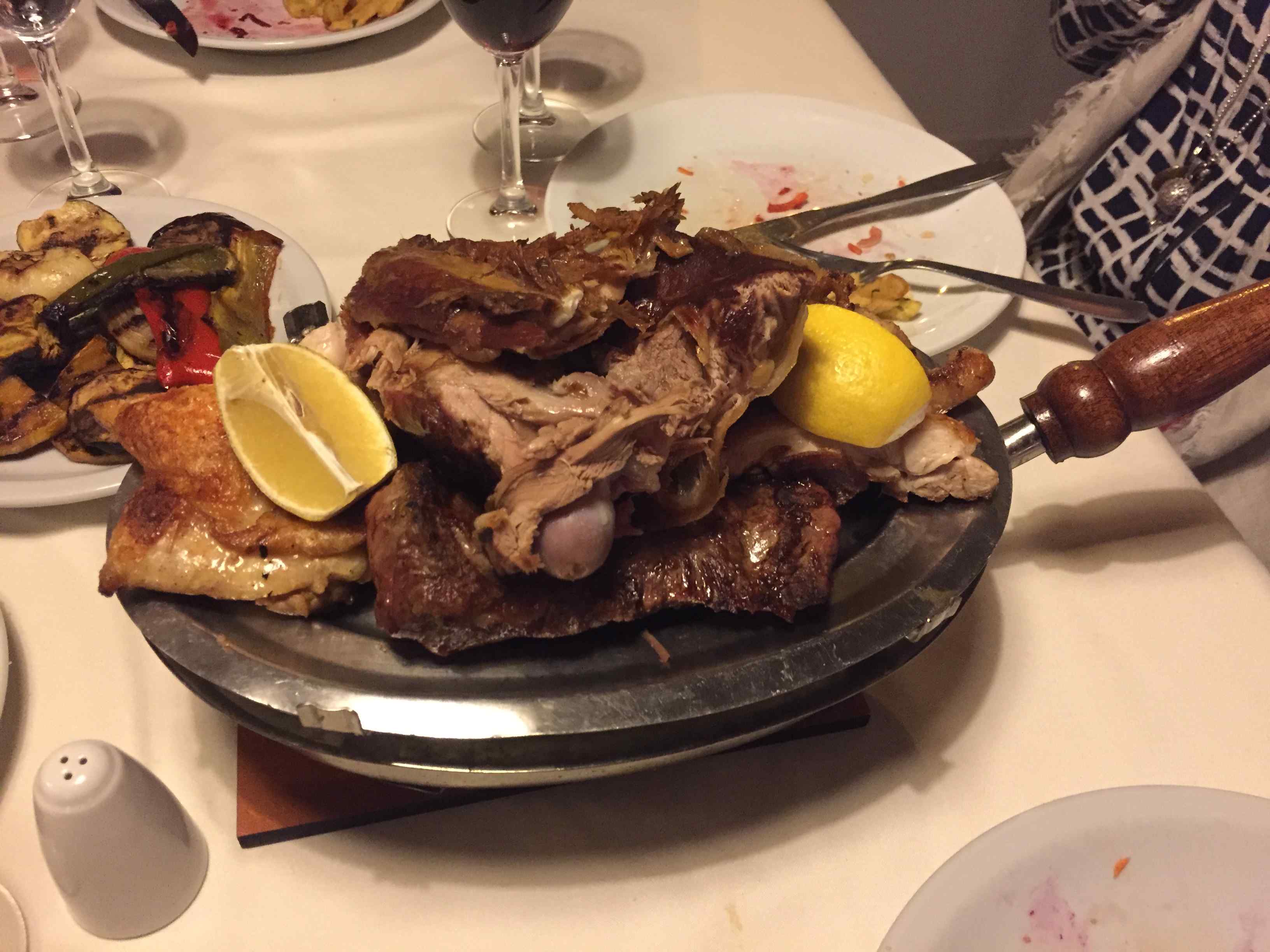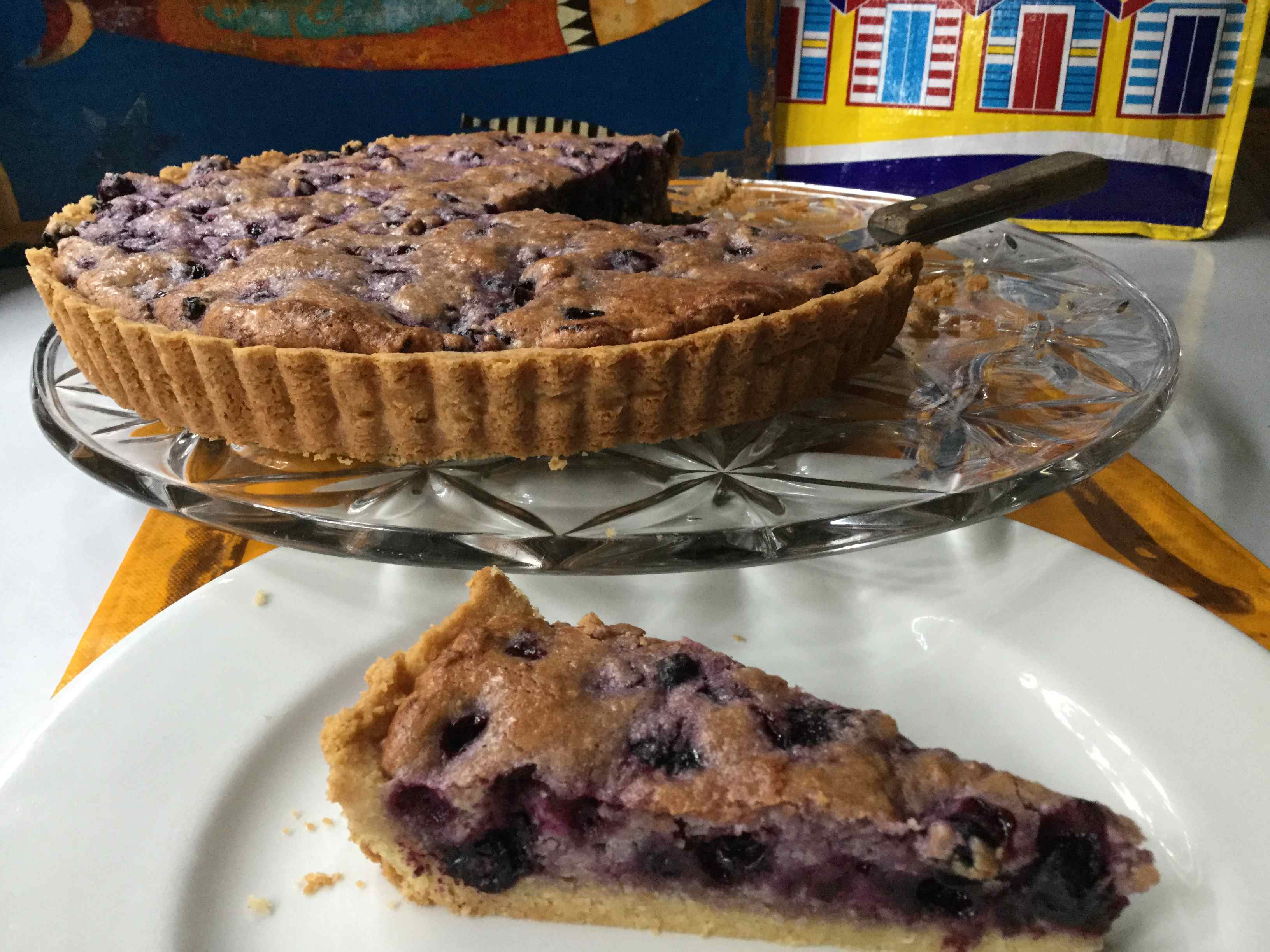This post follows on from: Torres del Paine
Calafate and El Calafate
The Calafate berry is symbolic to Patagonia, being indigenous to the region. Around a metre tall, the bushy plants produce edible berries that look a little like blueberries and have a taste that some describe as hinting of black currant, mulberry and/or blackberry. You will find them in various guises in Patagonia: liqueurs, cocktails (‘calafate sour’), jams, tarts, cakes and ice creams. (We give a recipe for a substitute berry at the end of this blog post.)
And there is a town named after the berry, El Calafate. It was our next stop on our travels after Torres del Paine (click the link above for a map of the region). The bus trip takes three to four hours and involves a border crossing. The countryside does have a stark, barren appearance, however, there are mountains ever present in the distance.
The town itself is interesting enough as a tourist stop – and we will examine it in more detail below – but it is the glaciers in the area that are the attraction.
Los Glaciares National Park
This national park is the biggest in Argentina and is just across the border from Chile, and north of the Torres del Paine National Park in Chile. There are numerous glaciers in this region, but the most famous is the Perito Moreno Glacier, about 74 kilometres west of El Calafate. It is one of the most important tourist attractions in Argentina and the reason why El Calfate has developed into a bustling tourist hub.
The features of the glacier are clearly seen in the Google satellite map below, with the huge, icy tongue emerging from the left of screen. To the right of the picture, the tourist road is quite clear. Visitors can easily view the glacier from extensive boardwalks, where they have a clear view of the two walls, one to their right and one to their left. It is also possible to take a boat onto the lake to see the two massive walls of ice that are seven to eight storeys high. If you are patient, and lucky, you will see giant slabs slide off the wall into the water, with a crashing roar.
El Calafate
A key attraction of the town of El Calafate is the Glaciarium Ice Museum, an interpretive centre for all things glacial. Its modern, streamlined architecture contrasts with the mix of modern, old and funky in the main street.
The town is a true tourist centre, with a selection of cafes, bars and eateries way out of proportion to its size and population.
There are plenty of barbecue restaurants to choose from. The two photos below are from La Tablita restaurant, the first showing the Patagonian lamb over the grill and the second showing what is delivered to your table. And it isn’t necessary to stick to drinking the malbecs of Mendoza as the restaurants often feature Patagonian wines; we had some quite memorable Chardonnays and Pinot Noirs.
A Calafate Tart – Made with blackcurrants!
Calafate berries are, not surprisingly, difficult to find in Australia. Thus we resorted to what could be the best substitute: blackcurrants. An Internet search brought up a recipe by Nigel Slater, published in The Guardian: Blackcurrant and Almond Tart. Of course, if you have access to calafate berries, try them in the recipe!
Here is a photo of our attempt, and we were really pleased with it; we haven’t dusted it with icing sugar.
We won’t repeat the recipe here but, suffice to say, it really works. For a yummy, tangy fruit tart follow the recipe exactly, with the following suggestions or options:
- Instead of his pastry, use your own sweet dessert pastry or try this sweet shortcrust pastry that has the advantage of being easier to par-bake.
- Sift the icing sugar if it is lumpy.
- You could reduce the ground almonds in the filling to 150g or 1½ cups.
- My father had blackcurrant canes in his garden, as did some of our neighbours along the Tamar. Blackcurrants have a short season in Australia. Out of season use frozen blackcurrants which will still give an excellent result; to find them, check with very good greengrocers or supermarkets; they may well be imported berries.
- We thawed our frozen berries a little, which leeched some juice that bled into the batter. Instead we should have mixed them in while still frozen.
- (Instead of blackcurrants, try other berries: blackberries, mulberries, raspberries, blueberries … but chop large berries into smaller pieces. Try red or white currants or a mixture with blackcurrants?)
- Check the tart after 40 minutes, then every few minutes until it is set, but not solid!
- Enjoy it soon out of the oven, with lovely cream.
Click here for the next stage in our South American journey: Lakes and Volcanoes!


